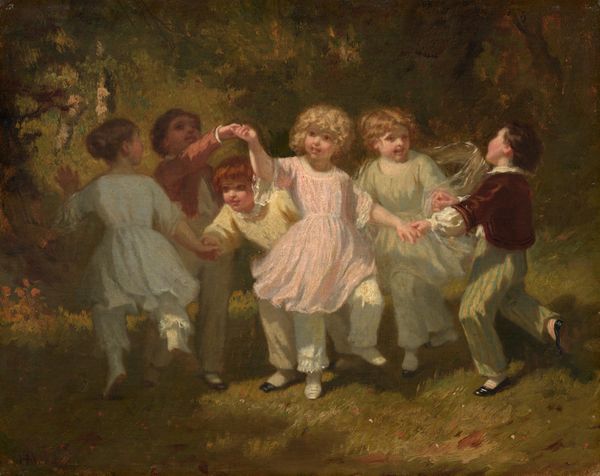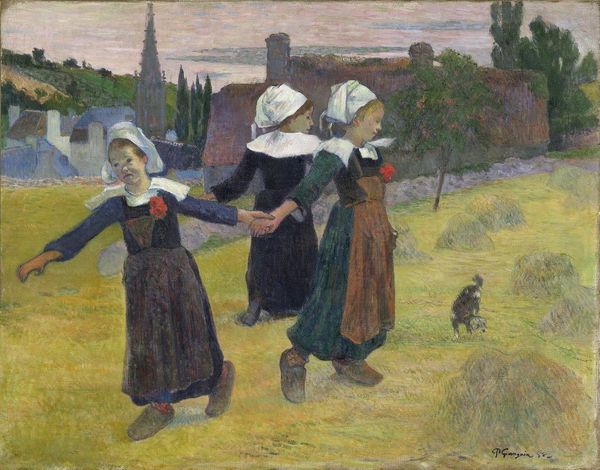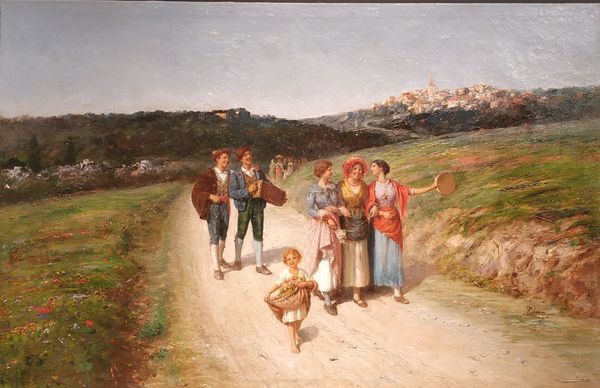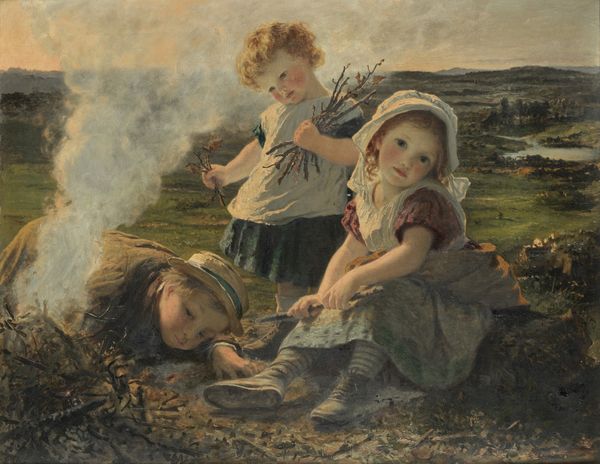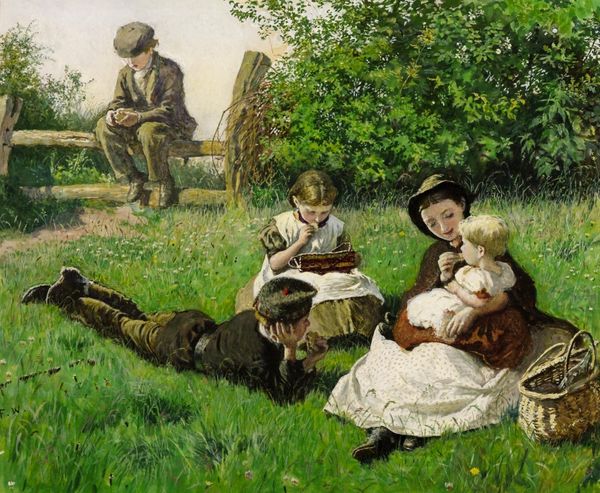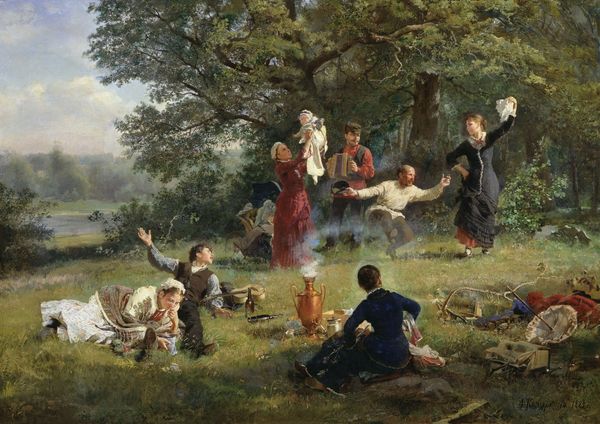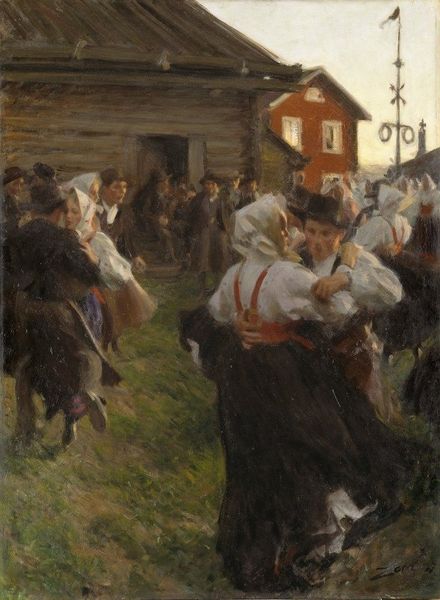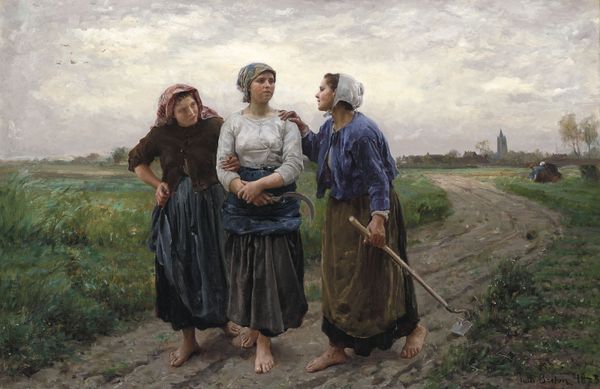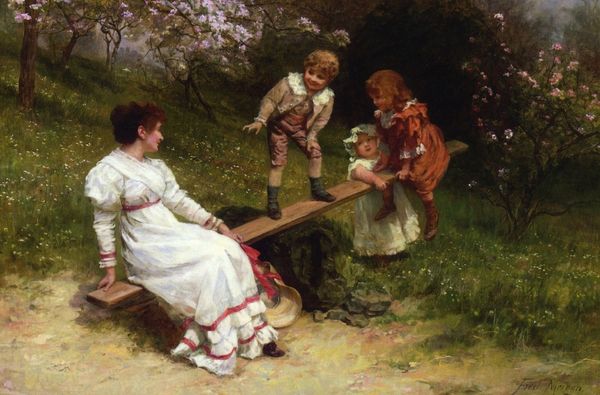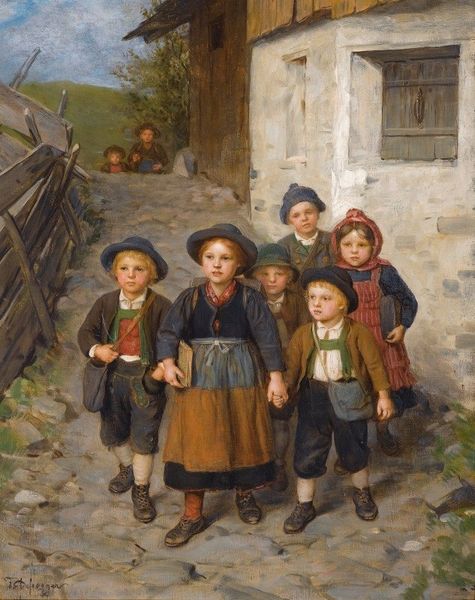
Copyright: Public Domain: Artvee
Curator: Looking at "Children Dancing in a Ring" from 1872, a painting by Hans Thoma. The medium here is oil on canvas. Editor: It’s an idyllic scene, isn’t it? There’s a quietude to the palette, mostly greens and grays. The texture seems quite smooth overall. Curator: Thoma seems intent on invoking a kind of Rousseauian simplicity, harking back to a prelapsarian harmony between humankind and nature. Childhood here operates as a potent symbol, doesn't it, evoking themes of innocence and uncorrupted joy? Editor: Yes, but something about the composition feels slightly unsettling. The figures seem a bit stiff, and their placement feels almost artificially arranged within the pictorial space. Observe the subdued chromatic range, for instance: the near-absence of vibrant colors reinforces a certain somber atmosphere that tempers any unbridled joy. Curator: Perhaps the clothing tells a story. Bare feet, simple clothes; there is almost a utopian leaning. Children dancing in a circle has ancient roots; for Thoma perhaps it represents an essential, primordial activity. Editor: From a formal perspective, the lack of strong focal point distributes attention evenly. But this, I suspect, leads to a kind of diluted impact; we're left with a rather dispersed, almost impersonal sentiment. I can admire Thoma’s intention, yet I hesitate to connect emotionally with the outcome. Curator: Perhaps that detachment invites introspection. These children may not be ‘real’ in a literal sense, but stand as ciphers for our own yearning for a lost connection to nature, for the joy of simply *being*. Editor: Perhaps. Regardless, Thoma’s subtle approach undeniably opens up an introspective pathway through the landscape. Curator: Precisely. It serves as an insightful reflection on simpler times. Editor: And its visual nuances invite deeper, even philosophical, consideration of art itself.
Comments
No comments
Be the first to comment and join the conversation on the ultimate creative platform.
